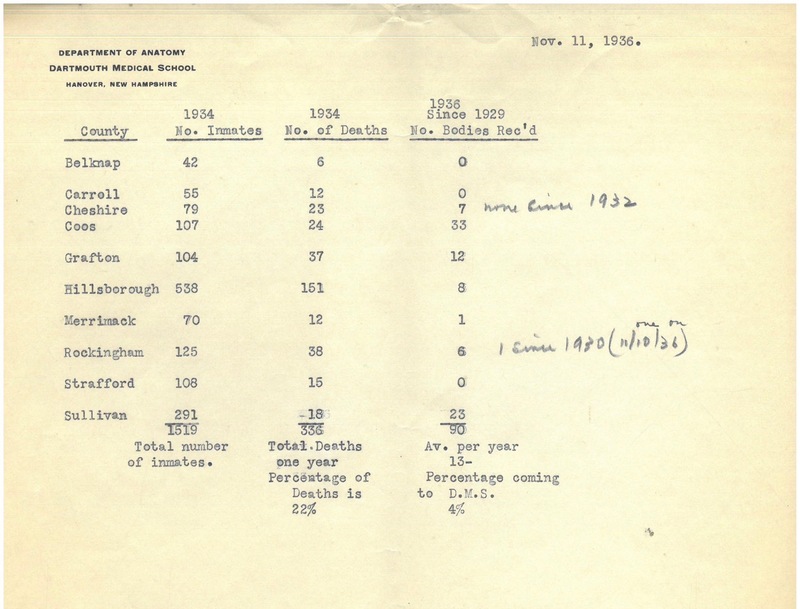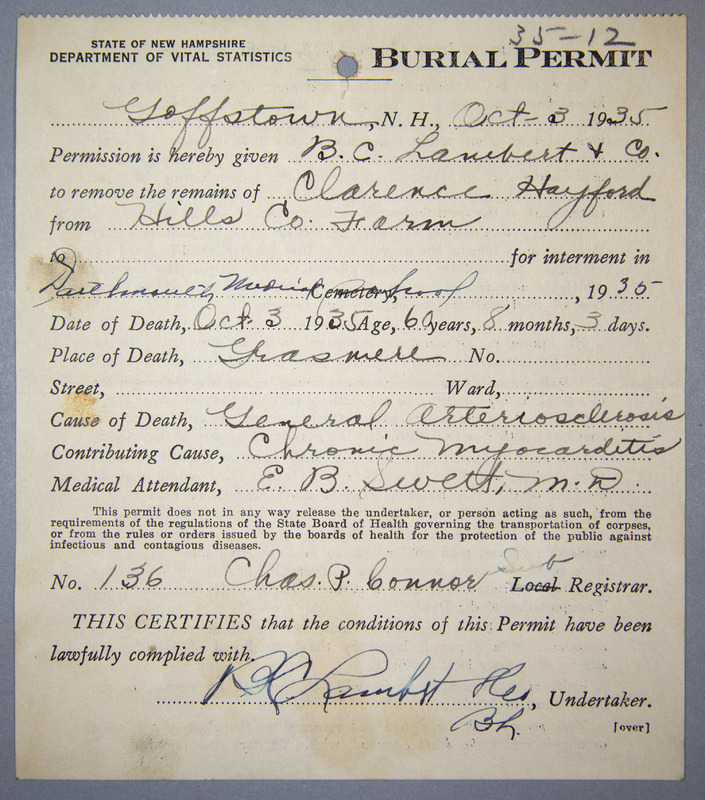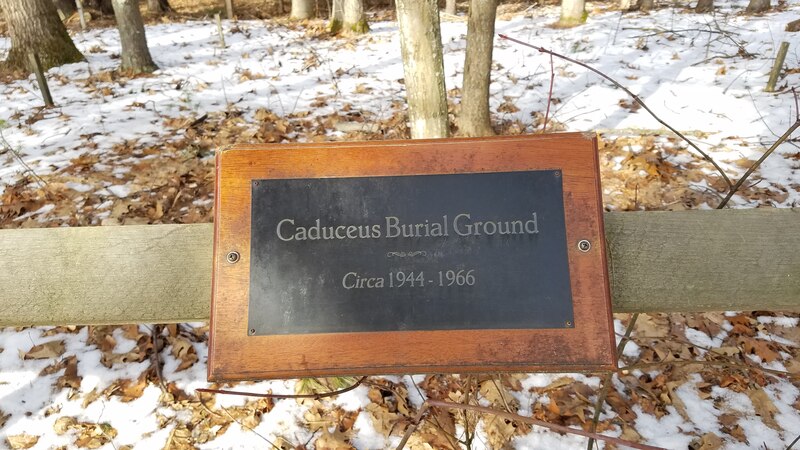1920s - 1940s: A Shortage of Anatomical Material
By the 1920s, with its somewhat grisly reputation of graverobbing behind it the medical school began taking advantage of newly legalized avenues for obtaining bodies. A 1925 publication of New Hampshire laws included a law for the "Advancement of Anatomical and Surgical Science", which stated that the body of any person who would be buried at the public expense - because they were poor or no one claimed the body, for instance - must be given to a physician or medical school if they requested it in writing. However, the passage of this law did little to either aid in the supply of a sufficient number of cadavers at the medical school or assuage public opinion on the practice. A March 30, 1937 letter - unsigned, but based on a follow-up letter presumably from John F. Bowler MD, Dean of the Medical School - to someone named Jack opens with "The cadaver situation in the Department of Anatomy has, since the first of this year, reached such a condition that I feel myself unable to carry longer the responsibility for the proper teaching of anatomy, in respect to the adequate supply of anatomical material." He goes on to explain that an investigation into the lack of cadavers that were expected under the 1925 law revealed that a relief organization was paying for the burials of unclaimed bodies rather than sending them to the medical school as the law required. While the matter was sorted out briefly, an anonymous official sent a "highly indignant" letter to the governor declaring that he would "pay from his own pocket for the burial of such cases as would come here if need be."
The issue of the lack of cadavers for teaching and research continued well into the 1940s. In late 1944, Dean Rolf C. Syvertsen lamented in a letter to Jeff Banks, MD at the University of Arkansas School of Medicine that the law was not often enforced.
“We do not have material sufficient to meet the accelerated schedule on a basis of two men per cadaver but have just barely made the deadline with four men per cadaver. There has been on this basis no opportunity however for any special preparations or demonstrations because every single specimen, good or bad, has had to be used for the course in Anatomy.”
Rolf C. Syvertsen, MD in a letter to Jeff Banks, MD
When bodies were transported to Hanover, there was an effort made to minimize their affiliation with Dartmouth in order to mitigate the public perception of their use in the medical school. Many of the burial permits in the archives leave the place of interment blank or list simply Hanover, NH, though a few from the 1930s have the interment location written out as Dartmouth Medical School. Likely these are few in number because Dartmouth actively discouraged the practice; in an unsigned letter dated April 27, 1943 a physician named George W. Hilton from Epping, NH was essentially reprimanded for listing Dartmouth Medical School as a destination on permits for the transfer of bodies. "Apropos the question you raise to the certificate or transit permit, in the future it should be made out listing the destination as the Caduceus Cemetery, Hanover NH. This avoids the institutional connection on the records which is probably better for the sake of people who might feel sensitive on the subject."
The Caduceus Cemetery referenced in the letter to Hilton was established sometime in the 1930s as the burial ground for bodies after they had been used for anatomical teaching. Where bodies were disposed of prior to the 1930s is unknown. The earliest burial of a body used in the anatomy department in the record is 1935, though it does not specify that it occurred at Caduceus. The Caduceus Cemetery, located just beyond what is now the golf course at the recently closed Hanover Country Club, is marked with a plaque that reads 1944-1966, though it is unclear where those dates came from - for example, we know from the letter to George Hilton in 1943 that the Caduceus Cemetery was in use before 1944.
What is clear is that the establishment of an official burial ground represents a shift in attitude and respect for those whose bodies have furthered medical teaching and research. Sometime in the 1930s Dean Rolf C. Syvertsen MD established The Ancient and Honorable Secret Society of Sextons, a select group of first and second year medical students who would dig a grave in the cemetery and return at midnight to perform a burial ceremony, presided over in the early days by Dean Syvertsen who was a lay minister. These ceremonial rites continued through the years that the Caduceus Cemetery was in use.



